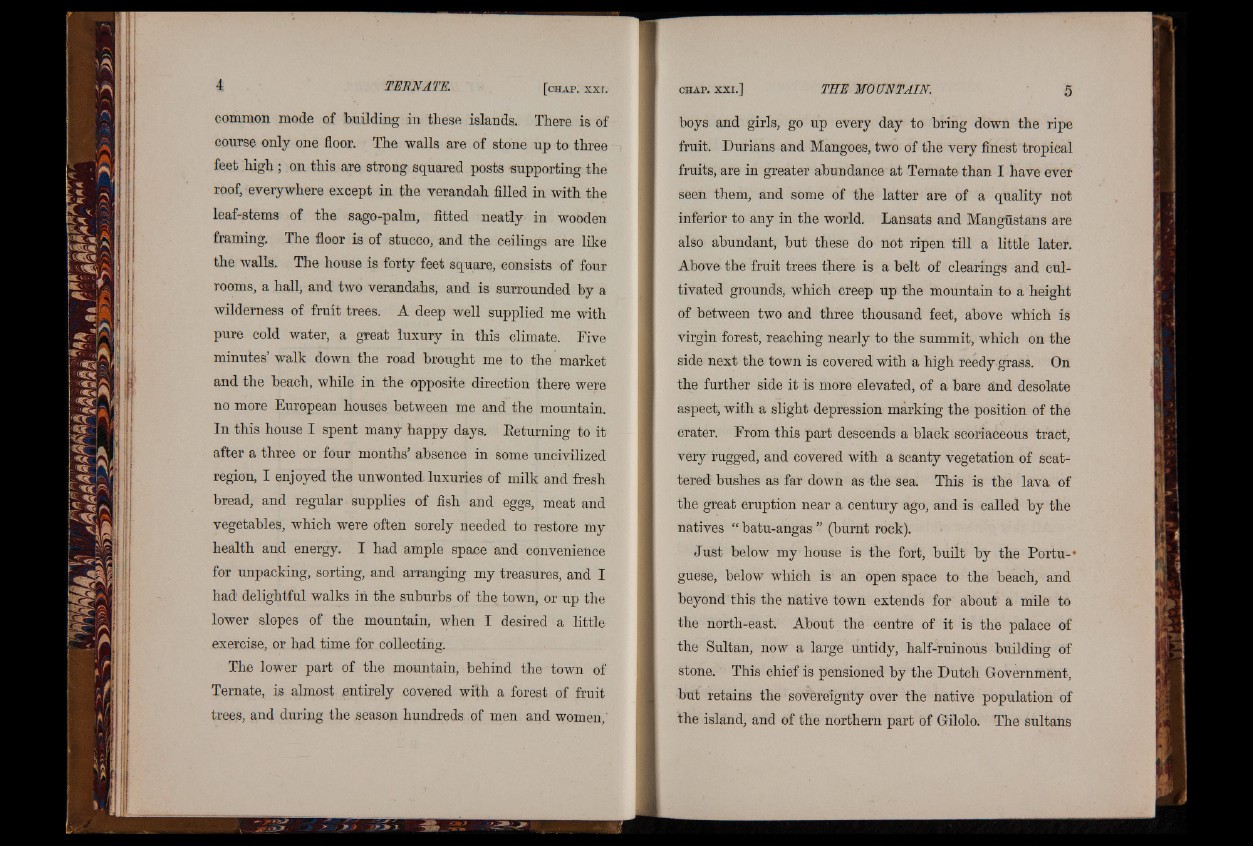
common mode of building in these islands. There is of
course only one floor. The walls are of stone up to three
feet high; on this are strong squared posts supporting the
roof, everywhere except in the verandah filled in with the
leaf-stems of the sago-palm, fitted neatly in wooden
framing. The floor is of stucco, and the ceilings are like
the walls. The house is forty feet square, consists of four
rooms, a hall, and two verandahs, and is surrounded by a
wilderness of fruit trees. A deep well supplied me with
pure cold water, a great luxury in this climate. Five
minutes’walk down the road brought me to the market
and the beach, while in the opposite direction there were
no more European houses between me and the mountain.
In this house I spent many happy days. Returning to it
after a three or four months’ absence in some uncivilized
region, I enjoyed the unwonted-luxuries of milk and fresh
bread, and regular supplies of fish and eggs, meat and
vegetables, which were often sorely needed to restore my
health and energy. I had ample space and convenience
for unpacking, sorting, and arranging my treasures, and I
had delightful walks in the suburbs of the town, or up the
lower slopes of the mountain, when I desired a little
exercise, or had time for collecting.
The lower part of the mountain, behind the town of
Ternate, is almost entirely covered with a forest of fruit
trees, and during the season hundreds of men and women,'
boys and girls, go up every day to bring down the ripe
fruit. Durians and Mangoes, two of the very finest tropical
fruits, are in greater abundance at Ternate than I have ever
seen them, and some of the latter are of a quality not
inferior to any in the world. Lansats and Mangustans are
also abundant, but these do not ripen till a little later.
Above the fruit trees there is a belt of clearings and cultivated
grounds, which creep up the mountain to a height
of between two and three thousand feet, above which is
virgin forest, reaching nearly to the summit, which on the
side next the town is covered with a high reedy grass. On
the further side it is more elevated, of a bare and desolate
aspect, with a slight depression marking the position of the
crater. From this part descends a black scoriaceous tract,
very fugged, and covered with a scanty vegetation of scattered
bushes as far down as the sea. This is the lava of
the great eruption near a century ago, and is called by the
natives “ batu-angas ” (burnt rock).
Just below my house is the fort, built by the Portu-*
guese, below which is an open space to the beach, and
beyond this the native town extends for about a mile to
the north-east. About the centre of it is the palace of
the Sultan, now a large untidy, half-ruinous building of
stone. This chief is pensioned by the Dutch Government,
but retains the sovereignty over the native population of
the island, and of the northern part of Gilolo. The sultans